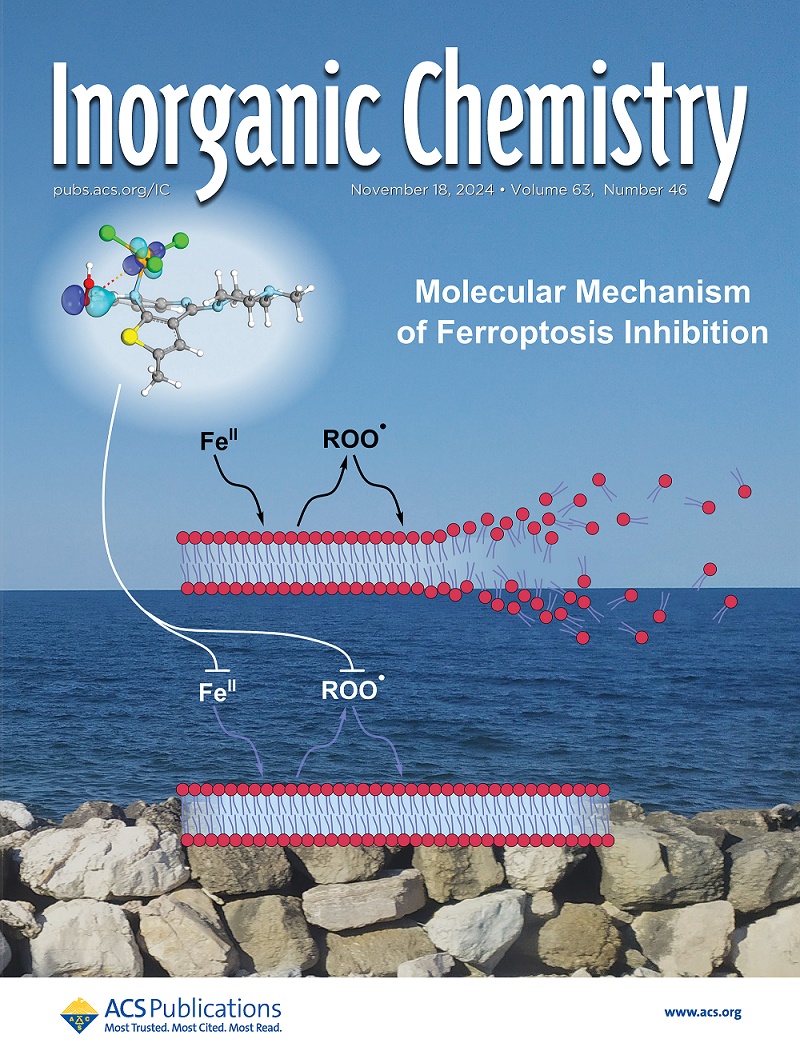绿色合成双发射高性能掺锡卤化铯锰纳米晶体。
IF 4.7
2区 化学
Q1 CHEMISTRY, INORGANIC & NUCLEAR
引用次数: 0
摘要
锰基卤化物钙钛矿因其具有良好的电子和光物理性能而逐渐成为探索光致发光材料的热点。然而,对全无机锰基材料的双发射和热致变色现象的研究却很少。本研究在室温下合成了Sn2+掺杂的Cs3MnBr3Cl2,其发光呈亮黄色,在525 nm和605 nm处有两个宽发射峰,对应半峰全宽分别为92 nm和91 nm。光致发光量子产率(PLQY)由Sn2+不存在时的5.3%显著提高到Sn2+存在时的33.41%。激发光谱、温度依赖光谱和时间分辨光谱表明,双发射源于Mn2+的自旋禁止跃迁(4T1→6A1)和Sn2+掺杂引起的自捕获激子发射。Sn2+的引入改变了晶体场环境和Mn2+周围的对称性,增强了电子-声子耦合,从而导致新的发射峰的出现和fwhm的显着拓宽。此外,由于两个发射峰的温度敏感性不同,随着温度的升高,发射的颜色由黄色过渡到橙红色。结合其增强的稳定性,该材料在光电领域显示出良好的应用潜力。本文章由计算机程序翻译,如有差异,请以英文原文为准。
Green Synthesis of Dual-Emission Tin-Doped Cesium Manganese Halide Nanocrystals with High Performance.
Manganese-based halide perovskites have gradually become a focus point for exploring photoluminescent materials due to their attractive electronic and photophysical properties. However, little attention has been paid to the dual-emission and thermochromic phenomena in all-inorganic Mn-based materials. In this study, Sn2+-doped Cs3MnBr3Cl2 is synthesized at room temperature, which exhibits bright yellow emission, with two broad emission peaks at 525 and 605 nm, corresponding to full width at half-maximum (fwhm) of 92 and 91 nm, respectively. The photoluminescence quantum yield (PLQY) is significantly increased from 5.3% for the absence of Sn2+ to 33.41% for the presence of Sn2+. The excitation, temperature-dependent, and time-resolved spectra indicate that the dual emissions originate from the spin-forbidden transition (4T1 → 6A1) of Mn2+ and the self-trapped exciton emission induced by Sn2+ doping. The introduction of Sn2+ modifies the crystal field environment and symmetry around Mn2+, intensifying the electron-phonon coupling, thereby causing the emergence of a new emission peak and significant broadening of the fwhm. Furthermore, due to the different temperature sensitivities of the two emission peaks, the emitted color is transitioned from yellow to orange-red as the temperature is increased. Combined with its enhanced stability, this material demonstrates promising application potential in the optoelectronic field.
求助全文
通过发布文献求助,成功后即可免费获取论文全文。
去求助
来源期刊

Inorganic Chemistry
化学-无机化学与核化学
CiteScore
7.60
自引率
13.00%
发文量
1960
审稿时长
1.9 months
期刊介绍:
Inorganic Chemistry publishes fundamental studies in all phases of inorganic chemistry. Coverage includes experimental and theoretical reports on quantitative studies of structure and thermodynamics, kinetics, mechanisms of inorganic reactions, bioinorganic chemistry, and relevant aspects of organometallic chemistry, solid-state phenomena, and chemical bonding theory. Emphasis is placed on the synthesis, structure, thermodynamics, reactivity, spectroscopy, and bonding properties of significant new and known compounds.
 求助内容:
求助内容: 应助结果提醒方式:
应助结果提醒方式:


